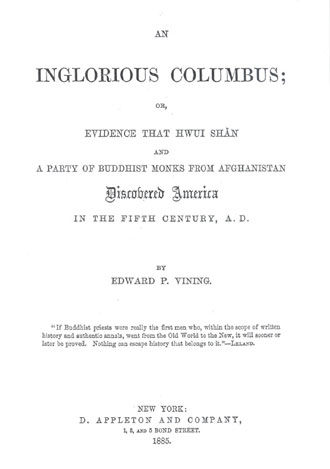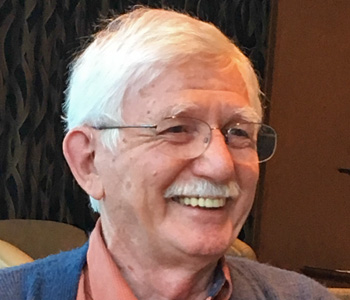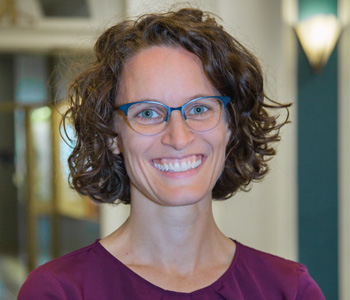Ronald Fritze
Invented Knowledge: False History, Fake Science and Pseudo-Religions
Reaktion Books
272 pages, 9 x 6 inches
ISBN 978 1861894304
Invented Knowledge is about various strange and false beliefs that have been held and still are held about the human past; the book tells how several strains of pseudo-historical and pseudo-scientific lore came into being.
What we’re talking about is a body of lore that includes lost continents, prehistoric super-civilizations, ancient astronauts, the Chinese along with many others discovering America before Columbus, the Ten Lost Tribes of Israel, and other strange theories of the same ilk.
Some of these fallacious theories claim to be based on historical evidence while others claim to have their foundations in archaeological or scientific evidence. In all cases, the advocates misuse and distort history, archaeology and the sciences in ways that appall professional scholars and critical thinkers. Some of these fringe ideas are amusing in their quirkiness and ultimately harmless. Others have proven to have some nasty consequences.
Some of these questionable theories have a long pedigree, the idea of Atlantis being about 2500 years old. I argue, however, that for the most part pseudo- or fringe knowledge is a product of modern industrial and post-industrial society with its mass education and mass culture. It is also the reverse side of the scientific and empirical knowledge produced by modern society.
Ironically many of the sources for these fallacious ideas are obsolete and discredited scholarship from earlier eras. From the seventeenth century into the twentieth century, belief in the existence of pre-Adamic races was considered heterodox by traditional Christians but perfectly respectable in the eyes of free-thinkers and people trying to reconcile Darwinian evolution with Christianity. During the second half of the twentieth century, Christian Identity turned the concept of pre-Adamites into a religious justification for white supremacy.
People are fascinated by conspiracy theories, mysteries, secret knowledge, the supernatural, and exotic cultures. Purveyors of fake knowledge appeal to all of these impulses quite successfully. They provide simple but dramatic answers and explanations to questions about the past. In contrast, traditional scholarship supplies complex, seemingly prosaic, and sometimes irritatingly tentative answers to the same questions.
Furthermore, many academics simply ignore pseudo-scholars as beneath their dignity. But the fact is that the questions answered by the pseudo-historians are questions that a curious public frequently asks. Rather than abandon this ground to fringe scholarship, my book’s goal is to tell the story and provide a genealogy of pseudo-history and pseudo-science about the human past.

For the most part pseudo- or fringe knowledge is a product of modern industrial and post-industrial society with its mass education and mass culture.
I first became interested in pseudo-history during the late 1980s when I was a faculty member at Lamar University. The five hundredth anniversary of Columbus’s first voyage to the Americas was coming up. I decided to offer a special topics course on Columbus. While preparing for that course, I began to come across various theories about people who discovered or settled the Americas before 1492.
Of course, the ancestors of the Native Americans got here many thousands of years before Columbus and the Norse of Greenland also had a brief sojourn in North America. But I was learning about Qin Chinese, ancient Egyptians, medieval Arabs, a wandering Pole, Templar refugees, and Atlanteans among many others. All of this information was extremely interesting, commonly discussed, and believed by people. And it was also just plain wrong.
I proposed to write a one-volume encyclopedia about the topic of pre-Columbian visitors to the Americas. Along the way I discovered there was a whole universe of other pseudo-history circulating through popular culture. It is an intriguing and sometimes scary wilderness of the intellect. I have remained interested in the phenomenon ever since and wanted to write more about it. Invented Knowledge is the result.
Ludicrous ideas about the past are common in popular culture. They have great appeal to many people. Legends that Prince Madoc and his medieval Welsh companions settled in North America and were transformed into white Indians appeal to our sense of adventure. They also appeal to the ethnic pride of Welsh-Americans. Suggesting that black people were the original and superior humans on the earth while whites are the later evil products of a perverse mad scientist helped to make life more bearable to downtrodden African Americans trapped in urban ghettos of Depression era America. Out of that milieu the Nation of Islam was born.
Fallacious ideas about the past have been the foundations for ideologies of other very violent and dangerous groups. The Nazis, for example, embraced an Aryan myth of German origins and also adopted the conspiracy theory of Jewish domination promoted by the fraudulent Protocols of the Elders of Zion. Pseudo-history has a dark side.
My book also discusses how fringe theories about the past reverberate between works of purported non-fiction and works of fiction. Science fiction and thriller novels, films, and television shows frequently incorporate pseudo-historical and pseudo-scientific ideas. These adaptations make for clever and enjoyable plots whether it is Indiana Jones, the X-Files, or a Clive Cussler novel.
Such fiction, however, can also inspire pseudo-knowledge. Jules Verne’s Twenty Thousand Leagues under the Sea began an Atlantis revival that Ignatius Donnelly solidified. H. P Lovecraft’s weird tales of impossibly ancient and monstrous super-civilizations inspired theories about ice-age civilizations in prehistoric times and visits by ancient astronauts.
The divide between non-fiction and fiction or true events and imaginative stories is usually quite clear for most people. On occasion, however, some people can have difficulty distinguishing between fact and fiction. The boundary between the two is sometimes fuzzy, and for some even non-existent. In that twilight zone of confusion, pseudo-history and pseudo-science can and does thrive.
Fringe scholars use deeply flawed methodologies. They mine their sources for evidence that backs their ideas and ignore the cases where the evidence contradicts them. Historical documents, archaeological remains, and scientific results are misinterpreted and distorted to serve the preconceived notions of writers like Immanuel Velikovsky.
The Piri Reis Map is one of the documents most frequently misinterpreted by fringe scholars. The somewhat unclear geographical features it depicts have been cited to prove the existence of ancient ice age civilizations, various pre-Columbian discoveries of the Americas, and visitations by ancient aliens.
Others purveyors of bogus knowledge like Madame Helena Blavatsky made up sources. Much of Blavatsky’s knowledge about the very distant past was allegedly derived from Akashic records transmitted to her by psychic means. Needless to say, this has made it hard for the skeptical to verify her references.
It is an interesting aspect of pseudo-scholarship and its practitioners that their ideas are often mutually exclusive. If one is true, the others generally have to be false.
Part of the long tradition of Chinese visitors to Pre-Columbian America

There is a section in the book that many readers might find particularly amusing, on the relation between occultism and spiritualism concerning Atlantis. One of the primary characters involved here is the flamboyant Madame Helena Blavatsky. She founded the Theosophical Society. Later she would make the existence of Atlantis an integral part of the belief system of Theosophy.
Madame Blavatsky claimed that she received instructions on how the Theosophical Society should be organized and operated from spiritual beings known as Masters. These beings would make their wishes known through precipitated letters, i.e., letters that seemingly appeared or materialized out of nowhere. Interestingly, when disagreements arose within the Theosophical movement, rival factions each produced precipitated letters from a Master who agreed with them. Wars of precipitated letters followed.
Another interesting section is called “The China Syndrome.” It deals with the theories of Gavin Menzies, whose book 1421 asserts that great Chinese fleets sailed around the world during the early 1420s, circumnavigating Africa, discovering the Americas and Australia, and navigating the icebound Northeast Passage. That is pretty amazing stuff.
Even more amazing is the story of how Menzies’ book came to be published. My account is based on interviews that Menzies and his publisher gave to an Australian radio show. They reveal the rather cynical way that a book widely regarded by experts as of dubious historical authenticity can be manipulated and marketed into becoming a bestseller.
The section telling the story of the catastrophist Immanuel Velikovsky could be thought-provoking for many readers. Velikovsky was a Jewish Russian who immigrated to the United States after a sojourn in Palestine. During the 1940s he developed ideas in which he claimed that Venus and Mars had on several occasions during antiquity wandered very near the earth. These near-misses of the earth created havoc and catastrophes throughout the world. Some of this turmoil is recorded in the Bible as aspects of the Ten Plagues of Egypt, the Israelite conquest of Canaan, and the destruction of Sennacherib’s Assyrian army besieging Jerusalem.
When Velikovsky’s book Worlds in Collision first came out it met with dismissal, derision, and hostility by scientists. So much hostility was directed against Velikovsky that many people came to view him as a sympathetic under-dog being bullied by the academic establishment.
In fact, Velikovsky had many academic friends, including most prominently Albert Einstein. Controversies over Velikovsky’s theories about ancient history raged for years. They provide a case study of how scholars should not deal with pseudo-science and pseudo-history. Velikovsky’s career also reveals a little known episode in Einstein’s life—his tolerance and even sympathy for mavericks espousing fringe theories.

It is an interesting aspect of pseudo-scholarship and its practitioners that their ideas are often mutually exclusive. If one is true, the others generally have to be false.
While researching and writing Invented Knowledge, I would sometimes worry that the topic of pseudo-history and pseudo-science would become passé. In fact, there is no danger of that happening any time soon.
Shortly after I submitted my manuscript to the publisher, Gavin Menzies brought out his 1434: The Year a Magnificent Chinese Fleet Sailed to Italy and Ignited the Renaissance. The title says it all—though it is a little perplexing to scholars of fifteenth-century Italy how the myriad of historians and chroniclers living in Italy at that time failed to comment on the Chinese visit.
Later, at about the time that Invented Knowledge appeared in print, the History Channel aired a new documentary titled Ancient Aliens. The producers provided the window dressing of giving both the true believers and the skeptics some screen time. In the end, however, the final presentation was heavily stacked in favor of those who believe in ancient astronauts. The documentary also managed to resurrect the clearly irrepressible Erik von Däniken one more time. As an editor at a major publishing company told a friend of mine several years ago, bunk sells, debunking doesn’t.
But my hope is that Invented Knowledge will inform and entertain my readers about a topic that can be fascinating, silly, and sometimes rather ominous and frightening—often all at the same time.




We don't put paywalls. We don't distract you with ads. We don't sell your data.
Please help to keep this running!